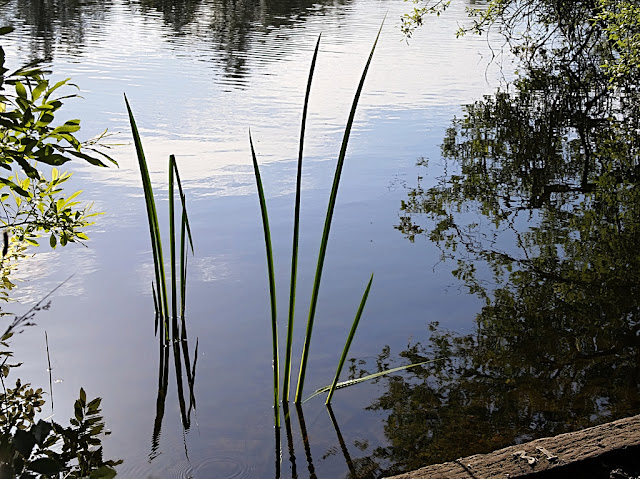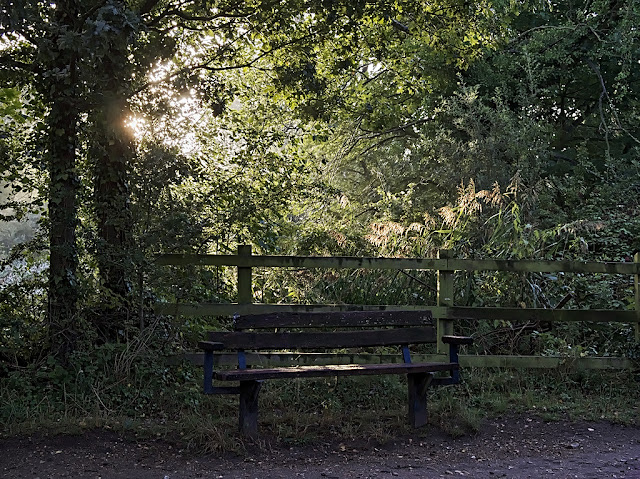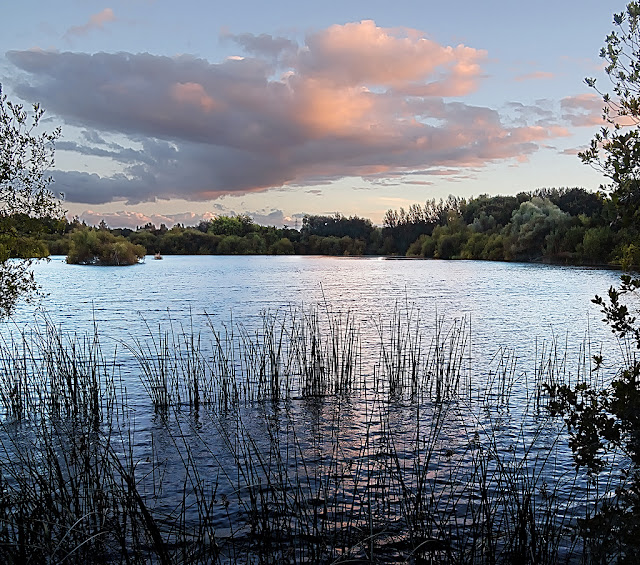 |
| Deep Pool - 3 July 2016 Single reeds have a simple elegance. |
This project to document Milton Country Park through the year is based on three assumptions.
Firstly, I believe that any natural, or semi natural environment, not matter how ordinary, banal, or familiar it may seem, is worthy of attention.
Secondly, any semi natural environment (there are very few truly natural environments left in England) is to be valued for what it offers, and not dismissed because of its lack of dramatic scenery, or noteworthy and endangered plants and animals. For most people, more exotic and dramatic locations bring excitement for perhaps a fortnight a year; it is in the local neighbourhood that one can enjoy nature for the other 300 odd days a year.
Thirdly, that a photographer with sufficient skill and imagination, and given the right conditions, should be able to produce interesting, if not beautiful images of such places. Edward Weston's pictures of Port Lobos and Eliot Porter's intimate landscapes of New England have been particularly inspirational to me.
 |
| Wetlands - 11 September 2016 Flower heads of the common reed shine in the early morning sun |
This brings me to the subject of this week's post: reeds (I use the word loosely for any plant that that has lanceolate leaves and grows by the water). I admit that I find these plants neither interesting nor visually appealing. A search on the net did not unearth any particularly interesting facts: no witches, fairies, goblins, spells or miracle cures; just practical uses in thatching, water cleansing and floor covering for churches. So, in many ways, to write a post on the subject of reeds illustrated with interesting photographs is a good test of the ideas I outlined above.
 |
| Dickerson's Pit - 3 August 2016 Reeds are important to the appearance of the park |
But reeds are important both to the ecology and to the appearance of the park. With over 2000 metres of water's edge to colonise, plus the majority of the wetland area, there are a lot of reeds in Milton Country Park.
 |
| Soft Rush - 26 June 2016 |
Visually, isolated plants have a certain elegance as shown in the image at the top of this post. With back lighting, the flower heads of the common reed are a dramatic sight. And in the fading evening light, I found the semi-circle of circle of rushes in shallow water just away from the bank made an attractive scene.
 |
| Branched Bur Weed - 7 July 2016 |
As mentioned above, I have used the term 'reed' very loosely. I now recognise there are at least five different plants involved. The commonest of which are the common reed, Phragmites australis; the soft rush, Juncus effusus; and yellow irises, Iris pseudocaris. The latter is definitely not a reed, but included here because of the shape of its leaves.
 |
| Greater Spearwort - 7 Jully 2016 |
In one small inlet off Dickerson's Pit, I found two other plants. One was branched bur-reed, Spharganium erectum, which looks like a model of a chemical formula found in a schools science laboratory. In the same short stretch, I was surprised by some large yellow flowers among the reeds, which on investigation proved to be greater spearwort, Ranunculus lingua.
I certainly have not unearthed any earth shattering facts or created world beating photographs, but what I have found and the images I have made do nothing to dissuade me that even the most unpromising material is worth close attention.
No comments:
Post a Comment